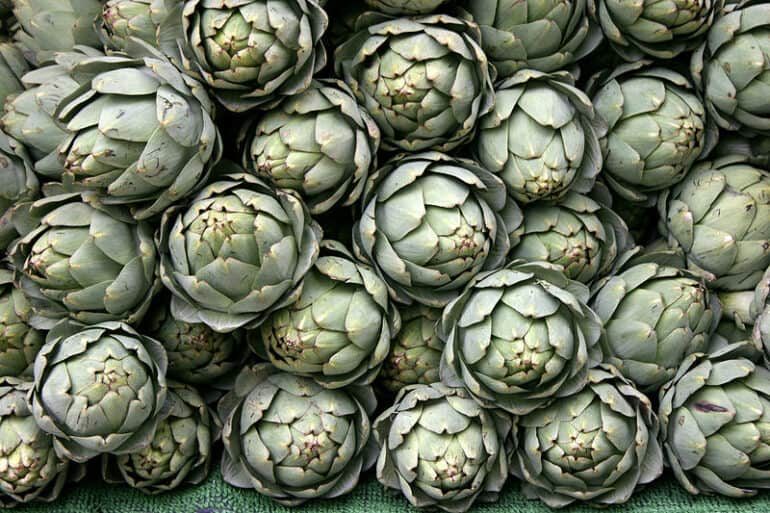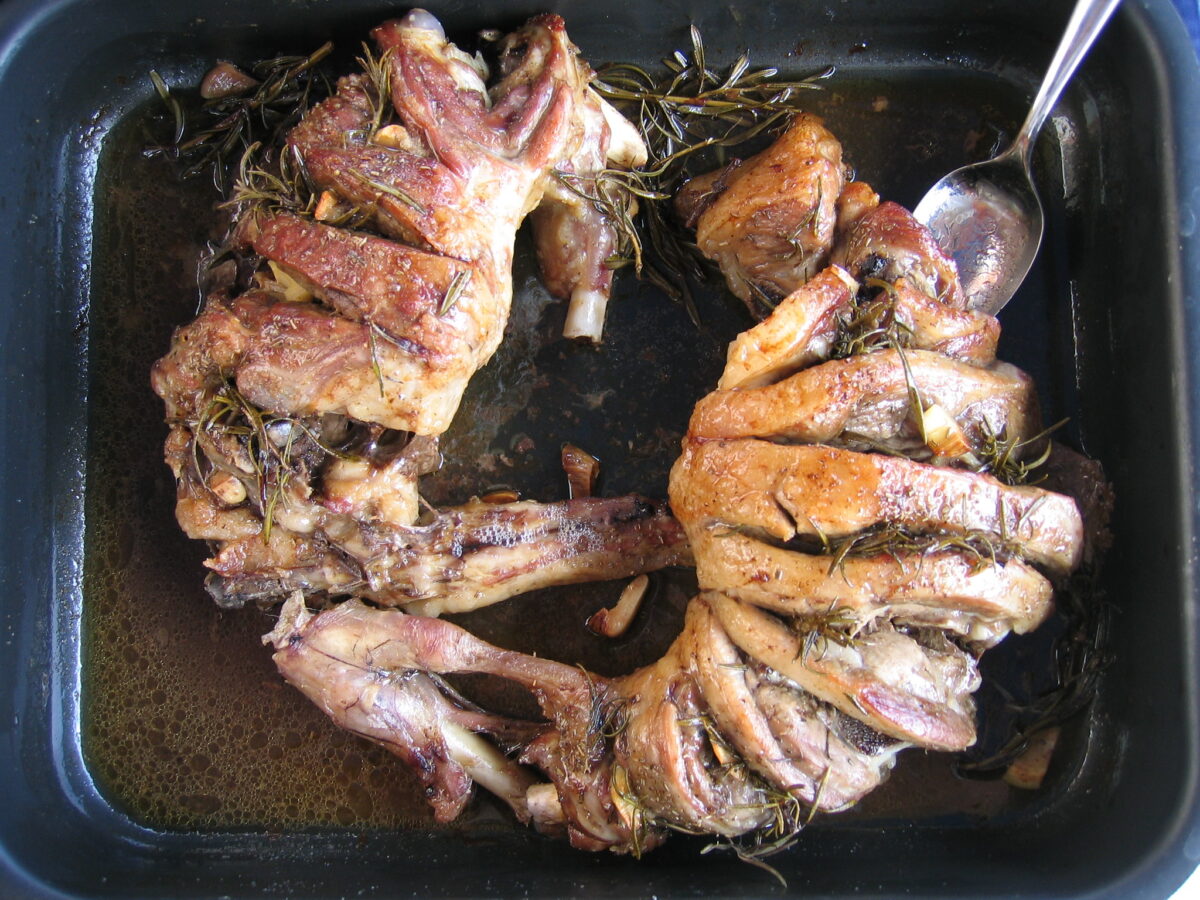Must-try Roman dishes and food traditions
“When in Rome”, the saying goes, “do as the Romans do”. To experience the true essence of the Eternal city, you need to immerse yourself in the local cuisine and traditions.
Also known as “cucina povera” or “poor man’s food”, traditional Roman food is known for being tasty and hearty but extremely simple at the same time. You’ll often find the same ingredients used in various Roman dishes, but you’ll find that the outcome is extremely different.
If you’re eager to dine like a local and feel at home in Rome, let us be your guide. Join us on a culinary journey to uncover Roman food traditions and must-try dishes. By immersing yourself in the flavors of Rome, you’ll blend in with the locals and experience the city from an authentic perspective.
RECOMMENDED:
Food and Restaurants in Rome
Rome International Food Guide
Top Street Food in Rome
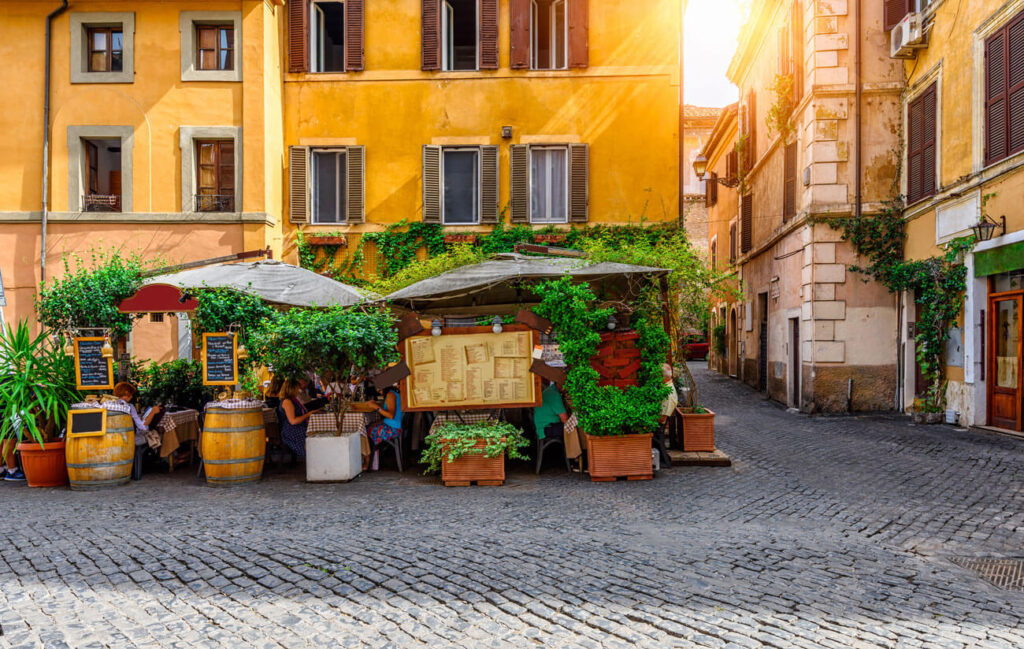
Roman food traditions
You probably already know this, but Italians can be quite particular about their food traditions and the unwritten “rules”. To avoid standing out as a tourist and to fully embrace the Roman dining culture, here are some food traditions to bear in mind.
Never drink cappuccino with a meal
This goes for the whole of Italy, but remember: cappuccino is a morning beverage. To blend with the locals and avoid looking like a tourist, enjoy your cappuccino during breakfast, paired with a delicious cornetto or sweet pastry. When it comes to mealtime, never order coffee in Italy with your lunch or dinner. The authentic Italian way is to savor an espresso only after you’re done eating.
Eat seasonal food
Romans like to eat fresh, seasonal food. So, steer clear of ordering carciofi (artichokes) in the summer – they’re a wintertime delicacy. While some classics, like carbonara and cacio e pepe, remain evergreen, many dishes are tied to specific seasons. Spotting a restaurant in Rome that offers non-seasonal dishes may be a telltale sign of a tourist trap. The best kind of restaurants change their menus daily to align with the offerings of the local market.
Suggested Read: Five Must-Eat Autumn Dishes In Rome
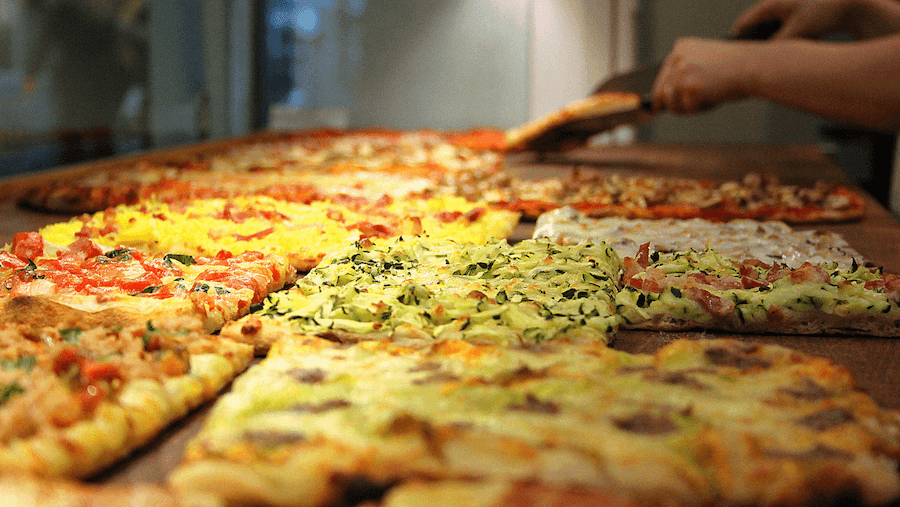
Eat pizza on the go
In Rome, pizza isn’t just a sit-down affair. Instead, if you’re looking for a quick lunch option, try one of Rome’s culinary gems: pizza al taglio (literally: “pizza to cut”, or “pizza by the slice” ). Head to one of the many pizzerie al taglio, or bakeries, and select the number of slices you want from the pizzas on display. You’ll find classics, such as pizza rossa (topped with tomato sauce) and pizza bianca (“white” pizza, with just oil and salt), and more generously topped varieties. Your chosen slices are then weighed, and you pay according to their weight. After that, you’re free to enjoy your pizza on the go! Pizza al taglio is also a delightful option for a mid-morning or mid-afternoon snack.
Suggested Read: Best Pizza in Rome
Don’t dine too early
In Rome, there’s an unspoken rule: dinner isn’t on the table before 8/8:30 pm. When booking a table, be mindful of this schedule. Most restaurants open around 7:30pm, and those busy at 6pm are usually tourist traps. If you find yourself hungry before dinner, opt for an afternoon snack. This way, you’ll immerse yourself in Rome’s dining rhythm.
Suggested Read: Classic Osterie And Trattorie In Rome
Foods you need to try in Rome
The truth is, many dishes served abroad are not actually Roman as restaurants claim. Leave all your expectations of Italian cuisine at home and start getting a taste of what Roman cuisine really is… Keep reading to find out about the best traditional Roman dishes, spanning from appetizers and first courses to second courses and side dishes.
Carciofi alla Romana and Carciofi alla Giudia
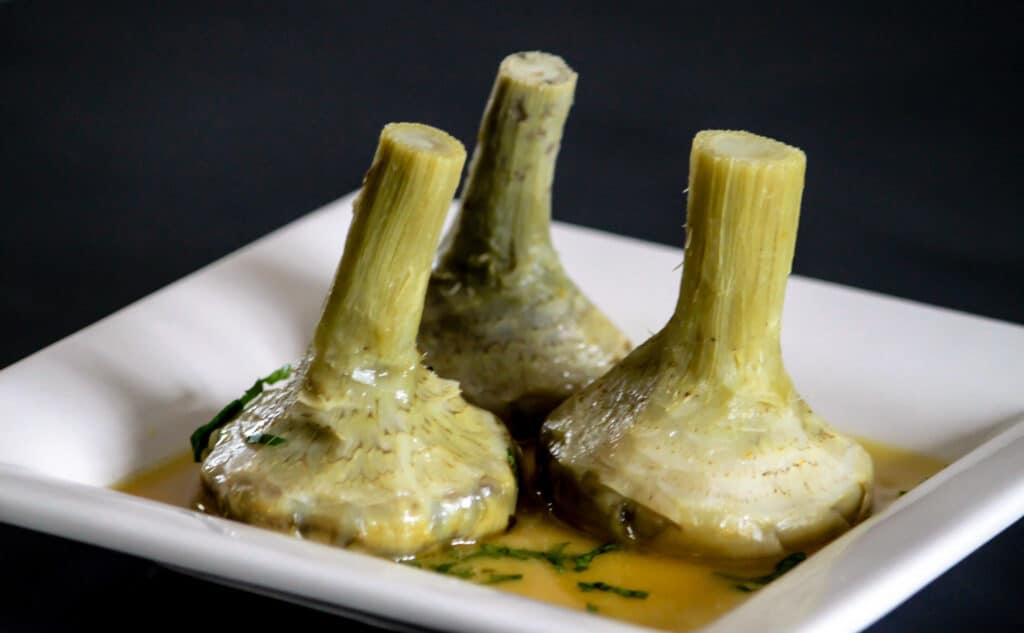
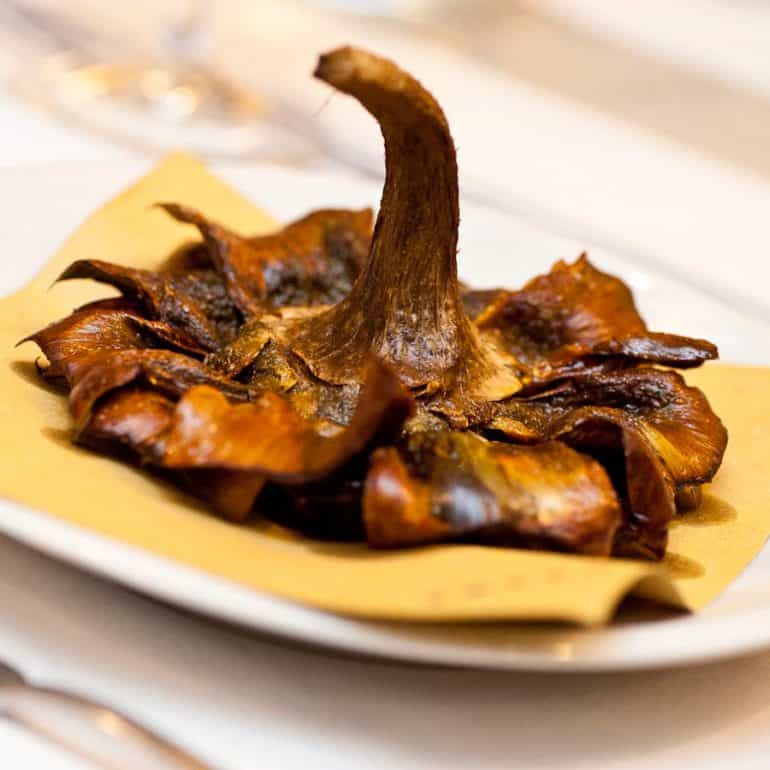
Carciofi, or artichokes, are frequently used in Roman cuisine. You’ll find artichokes served as starters, side dishes or even in first courses. If you’re visiting Rome from late autumn to spring, make sure to try them. You’ll find them served in two different ways: Roman style (carciofi alla romana) or Jewish style (carciofi alla giudia). The main difference is the way in which the artichokes are cooked: carciofi alla romana are fresh artichokes stuffed with parsley, mentuccia (a kind of mint), and garlic cooked in water, white wine, and oil. Cariciofi alla giudia, on the other hand, are fried. Both versions are delicious and must-tries when in Rome.
Supplì

These delicious fried rice balls should be on your food radar during your trip to Rome. The classic version is made with ragu and mozzarella but you can find numerous different fillings around the city. From carbonara and gricia to cacio e pepe supplì, there are many options to choose from. Apart from being a great starter along with other types of fried goodies, supplì are also a perfect Roman street food snack.
Cacio e Pepe
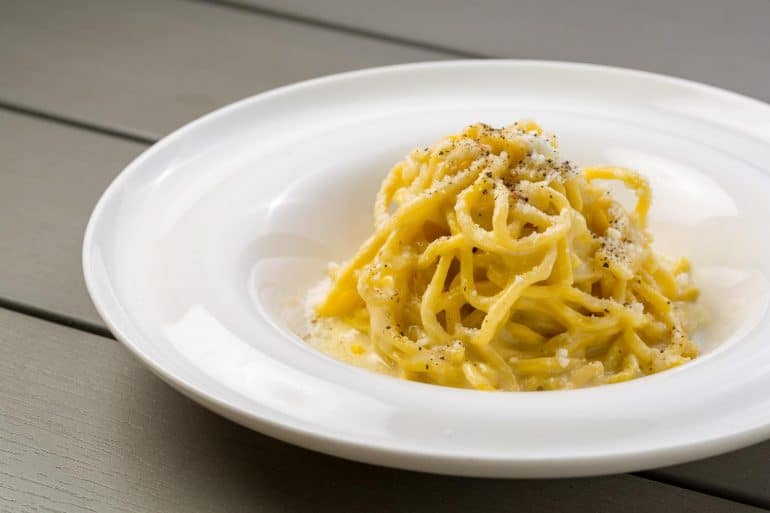
You will immediately adore this classic Roman dish. Cacio e Pepe is the real expression of Italian expertise in cooking, it’s unlike any pasta dish you’ve ever tasted and believed to be one of the most ancient recipes. You’ll ask the waiter, “So… again, what’s in it?” And he will repeat “Just cheese and pepper.” When the richness of pecorino romano, the perfect amount of pasta water, homemade tonnarelli pasta and fresh ground black pepper come together you will find yourself grinning and shaking your head in reverence. Like the carbonara, this is again, a glorious example of how creaminess can be achieved without cream. I promise you, it is NOT some congealed cousin of macaroni and cheese, but rather, a dish that lets you really luxuriate in that slight bite in the al dente pasta, the sharp saltiness of the cheese and Italians’ gift for stripping things back to celebrate a single flavour yet still serving up steaming plates of comfort food.
Here’s where to eat the best Cacio e Pepe in Rome.
Carbonara
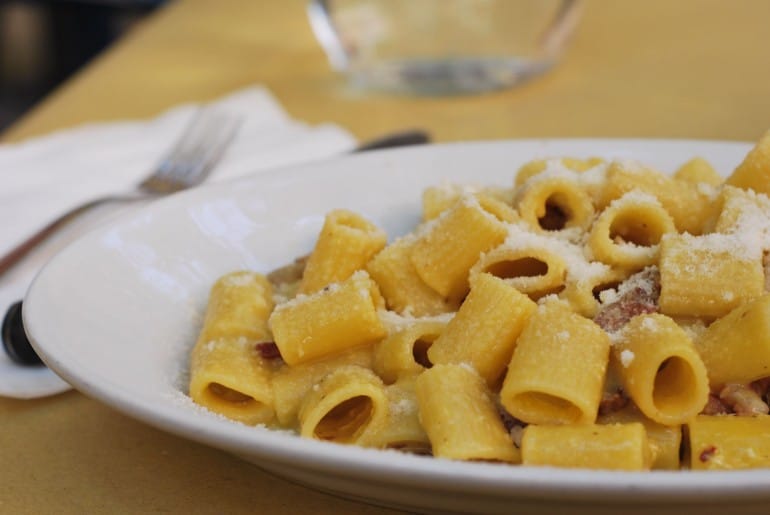
This is a Roman classic. Forget cream, forget bacon – this is made with the natural richness of eggs, delicious guanciale (pig’s cheek), pecorino cheese and ground pepper. It’s a celebration of saltiness and while it is undoubtedly Roman, the story regarding its invention is a little vague. Some say it came about after the war when the presence of the Americans brought about an abundance of eggs and ‘bacon’, however, most link it to the ‘carbonai’ (coal miners or charcoal workers) among whom it is believed to have been quite popular. It certainly tastes like a hearty dish a coal miner might tuck into. Foreigners can wince at the idea of cooking the egg and cheese mixture purely by the heat of the freshly cooked spaghetti and a little pasta water but trust me, once you’ve tried this dish in Rome you will weep at the shameful imitations overseas involving chicken, cheddar cheese, creme fraiche or – God forbid – ham! In terms of your pasta choice, most places in Rome will serve it with the simple spaghetti or rigatoni.
Here’s where to eat the best Carbonara in Rome.
Amatriciana
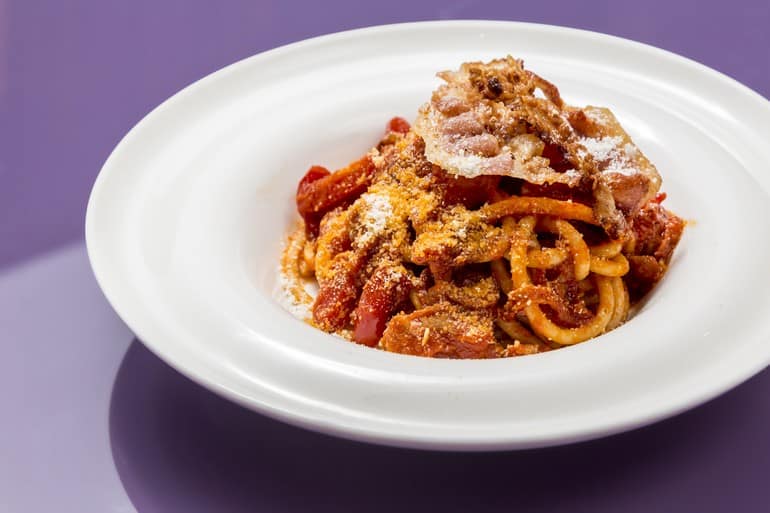
Not suitable for vegetarians and vegans, but a blessing to others. The sauce in Amatriciana is an artistic combination of guanciale (pig’s cheek), tomatoes, and pecorino (sheep’s milk) cheese as a topping. Do not confuse this with ‘arrabbiata’, which is another tomato-based pasta sauce bringing together garlic and chili. Amatriciana comes from the town of Amatrice, which is in the province of Rieti just out of Rome. Amatriciana is an evolution of Gricia, which lacks tomatoes, as it is a creation before tomatoes were imported to Italy. The types of pasta typically used in this dish are spaghetti, bucatini (tubular spaghetti), or rigatoni.
Gricia
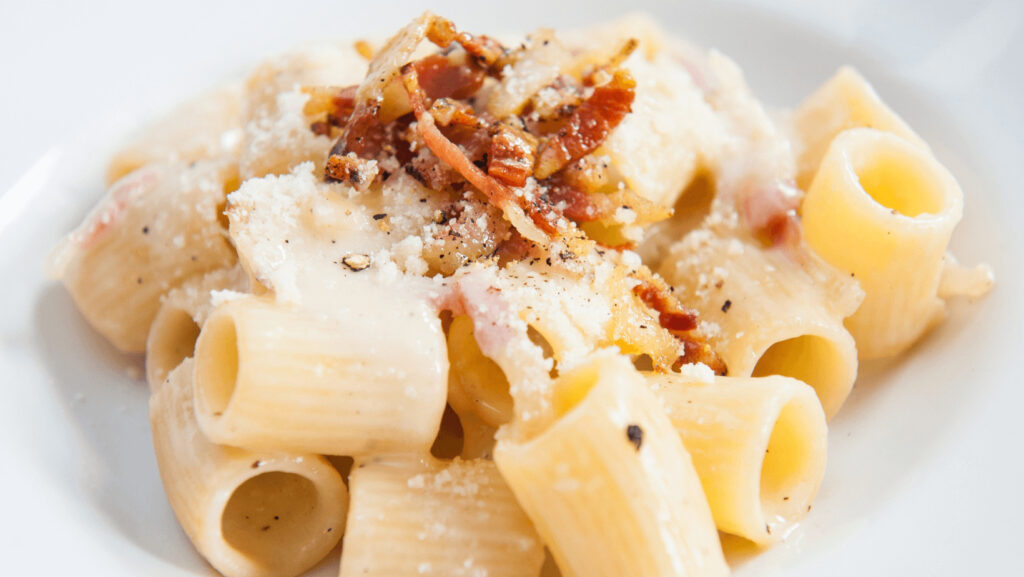
Sometimes called “white Amatriciana”, the Gricia uses the same ingredients as the Amatriciana, minus the tomatoes. So, Pecorino Romano (sheep’s milk) cheese and crispy guanciale (pig’s cheek) compose its ingredients, sprinkled with lots of ground pepper. Rigatoni or spaghetti is the usual pasta of this dish. The word Grici referred to Greek bakers in Roman times. History says that Gricia was a favorable dish to Roman bakers, which was easy to prepare, tasty, and nutritious.
Saltimbocca alla Romana
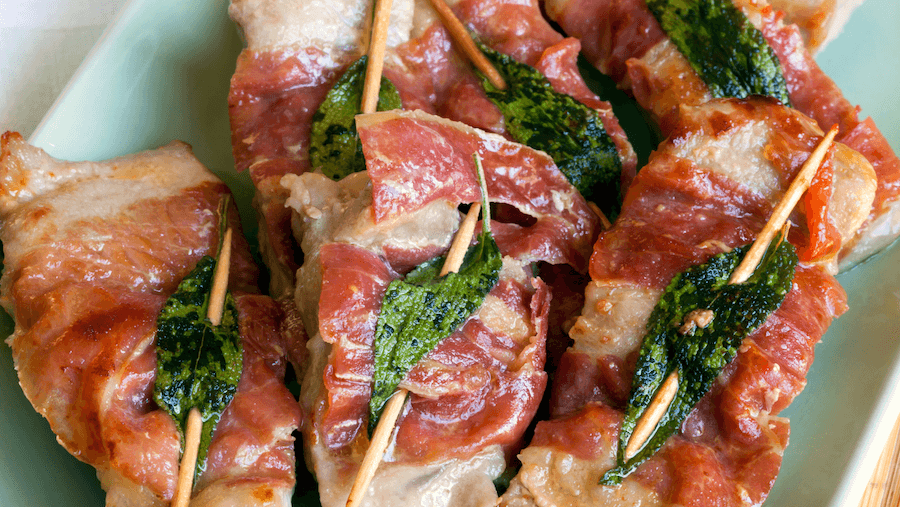
A good option for meat lovers, if not the best! Saltimbocca alla Romana are cooked veal slices topped with prosciutto and sage and cooked with dry white wine and butter. It is one of the most widely known dishes affiliated to Italian cuisine. Some countries have their own version of Saltimbocca, which is not even close to what you can get in Rome. That’s why you should absolutely order it in Rome and try the original Roman recipe.
Abbacchio alla Romana
A typical rustic Roman dish for meat lovers! It is a popular secondo (second main course) often served during Easter celebrations. So what’s all the fuss about? It’s simply roasted lamb seasoned with various aromatic herbs, salt, anchovies, vinegar, white wine and olive oil. But it’s oh-so-good and the meat is super tender.
Cicoria ripassata
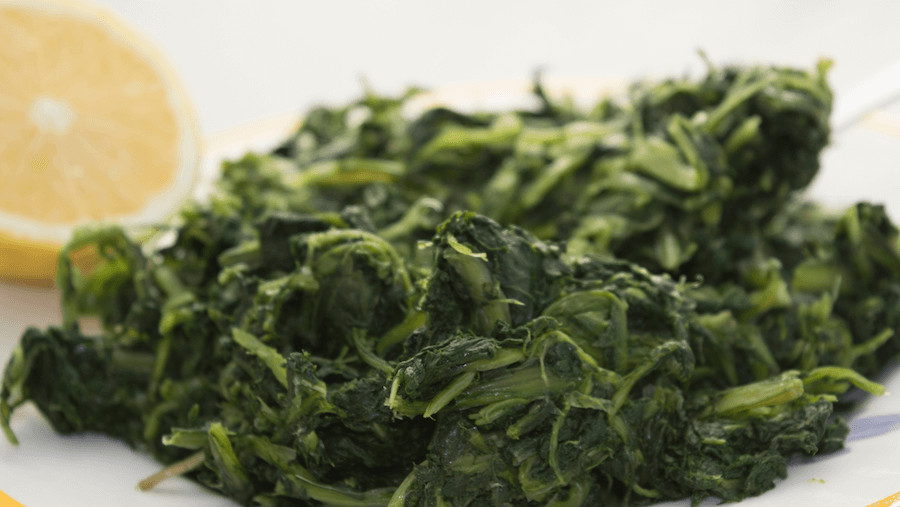
It may look like simple spinach, but this side dish is a special treat found only in Rome. Romans enjoy hearty flavors, but they also have a soft spot for greens, and cicoria is a favorite. Cicoria is a leafy green with a bitter taste. It’s boiled and then sautéed with a oil, garlic, and chili. You’ll find it in the contorni dishes of the menu, but you can also enjoy it as an appetizer.
Puntarelle salad
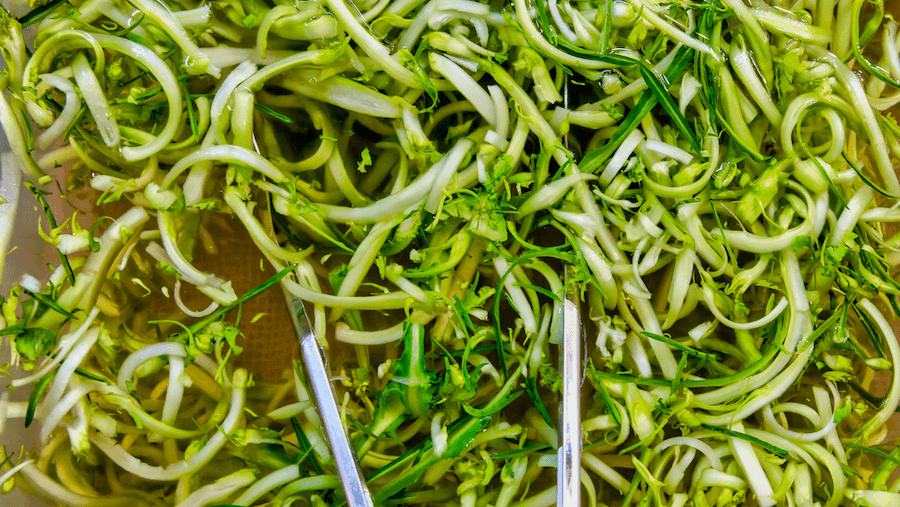
Puntarelle is another classic Roman vegetable, usually served as a side dish. It’s a tasty green from the chicory family that thrives in the rural areas surrounding Rome, making it a local specialty. Puntarelle grows in the wintertime and spring, so don’t look for it on the menu during the summer. The Roman Puntarelle salad comes with a traditional dressing that includes anchovies, a touch of garlic, and vinegar.
Where to try Roman dishes in Rome
The best places to taste Roman cuisine in Rome are known as trattorias and osterias. They’re no-frills family-run restaurants that serve the real deal. From yummy supplì and carciofi alla romana to heavenly carbonara and saltimbocca alla romana, here’s a few restaurants to put on your list!
- Flavio al Velavevodetto: Via di Monte Testaccio, 97
- Checco er Carettiere: Via Benedetta, 10
- Osteria Fratelli Mori: Via dei Conciatori, 10
- Zii Umberto, Piazza della Malva
- Trattoria Pennestri: Via Giovanni da Empoli, 5
- Da Gino al Parlamento, Vicolo Rosini 4
- La Carbonara, Via Panisperna, 214
- Da Casare al Casaletto, Via del Casaletto, 45
- Augustarello a Testaccio, Via Giovanni Branca, 100
- Tavernaccia Da Bruno, Via Giovanni da Castel Bolognese, 63


